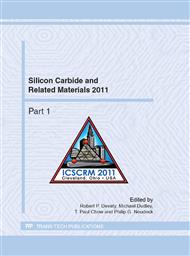p.1059
p.1065
p.1069
p.1073
p.1077
p.1081
p.1085
p.1089
p.1093
Material Defects and Rugged Electrical Power Switching in Semiconductors
Abstract:
A paradigm shift in the development and utilization of power semiconductor switch technology is proposed. This new "top down" approach begins with the field-reliability of a power semiconductor switch in a power converter circuit is subjected to long-term repetitive-switching under stressful field-operating conditions. This approach is derived from extensive field-reliability data collected on state-of-the-art silicon power MOSFETs in compact computer/telecom power supplies that clearly suggests that power MOSFET field-failures were primarily caused by bulk material defects. A careful survey of power switch technologies reported to-date in Silicon Carbide (SiC) and Gallium Nitride (GaN) further suggests that excessive bulk material defects have predominantly hindered the development and commercialization of cost-effective, high-performance, and reliable high-power devices. A reliability-driven approach is likely to "unlock" the vast potential of SiC (and GaN for moderate power levels) power device technology for high-voltage and high-power switching electronics in order to impact transformative changes.
Info:
Periodical:
Pages:
1077-1080
Citation:
Online since:
May 2012
Authors:
Keywords:
Price:
Сopyright:
© 2012 Trans Tech Publications Ltd. All Rights Reserved
Share:
Citation:


